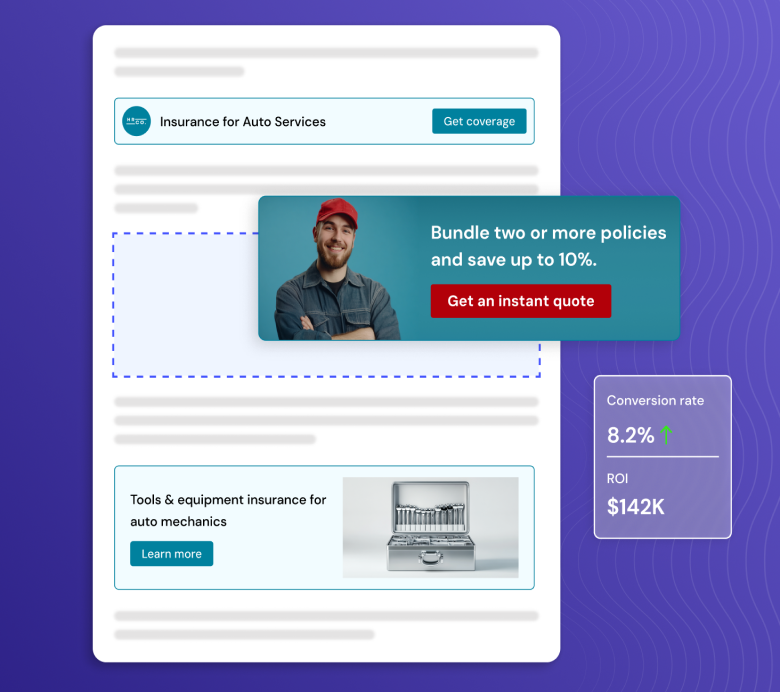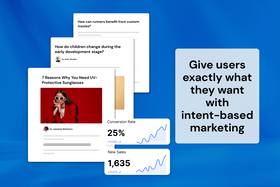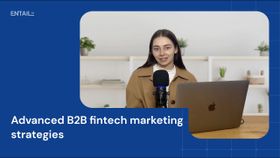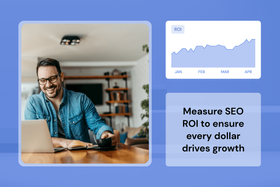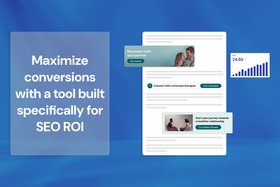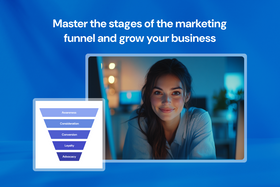SEO vs. CRO: Why you need both to maximize results
Don’t just bring in traffic—convert it. Explore the power of combining SEO and CRO to supercharge your site's performance.
Updated November 21, 2024
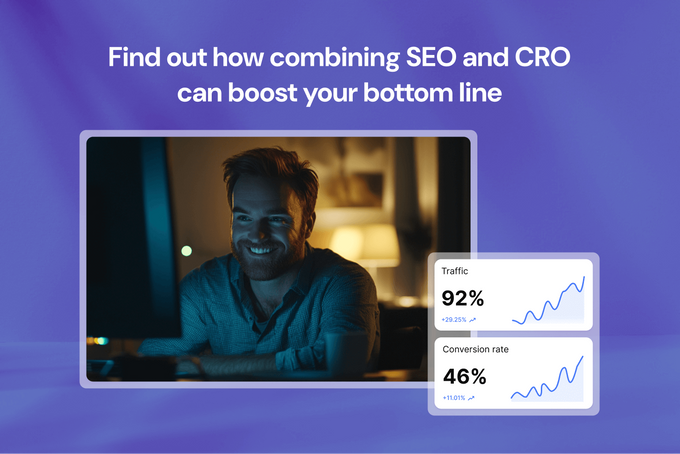
Attracting visitors to your website is only half the battle—what happens next is just as important. SEO focuses on getting more people to your site by improving visibility in search engines, while CRO ensures those visitors complete desired actions once they arrive. Many businesses treat these as separate strategies, but combining SEO and CRO creates a direct path from discovery to conversion. Let's explore why leveraging both SEO and CRO is the smarter approach to driving real, measurable growth in 2026.
Key takeaways
- Combine SEO and CRO to improve traffic quality and conversion potential.
- Target user intent with your SEO content and CRO strategy to guide them toward conversion.
- Use data to continuously test and refine your optimization efforts.
- Prioritize user experience by maintaining fast load times and intuitive navigation to boost rankings and conversion rates.
What is SEO?
Search engine optimization (SEO) is a set of techniques used to improve your website in order to increase organic traffic from search engines. When done right, SEO can connect you with potential customers who are actively searching for your offering. By understanding user intent and creating content that resonates with both search engines and users, you build a continuous stream of qualified traffic ready to become customers.
Your SEO strategy operates through three main categories that work together to boost your site's performance:
- On-page SEO: This refers to optimizing your content and web pages for search engines and users. Generally, on-page SEO activities include keyword research, content creation, internal linking, and optimizing meta titles and descriptions.
- Technical SEO: This involves ensuring your site is structured and functioning smoothly so search engines can easily crawl and understand it. Here, you focus on site speed, indexing, and user experience.
- Off-page SEO: This refers to actions you take outside of your website, like earning backlinks, to build authority and ultimately boost search engine rankings.
» Streamline SEO funnel creation and user journey optimization.
What is CRO?
Conversion rate optimization (CRO) transforms your website visitors into customers through data-driven improvements. By analyzing user behavior and making strategic adjustments to your site, CRO aims to increase your conversion rate, i.e., the percentage of visitors who take desired actions on your site—whether that's making a purchase, downloading a guide, or booking a demo.
How to use SEO and CRO together
SEO and CRO work hand in hand to grow your business. SEO drives more visitors to your site by improving rankings, but getting a lot of traffic isn't enough—you need CRO to convert those visitors into customers. At the same time, you can't get conversions if your site doesn't rank.
Here's how you can leverage both SEO and CRO to increase traffic and conversions.
Target search intent
Understanding search intent helps your SEO and CRO efforts work together seamlessly. From an SEO perspective, you need to create helpful content that fully answers users' search queries. On the CRO side, you have to optimize these pages to guide visitors toward conversion based on their current stage in the user journey.
There are four types of search intent:
- Informational: Users are looking for information or answers to their questions (e.g., "What is SEO?").
- Navigational: Users want to find a specific website or brand (e.g., "Google Analytics login").
- Transactional: Users are ready to make a purchase or take a specific action (e.g., "Buy noise-canceling headphones").
- Commercial: Users are researching products or services before deciding to purchase (e.g., "Best Android smartphones").
The type of search intent you target will determine the type of page you need to create and the information it should include.
» Learn how to create SEO content that converts.
Create high-quality SEO content
Creating content that ranks well and converts requires a strategic approach focused on guiding users to the next logical step in their journey and your conversion funnel. Here are a few principles to keep in mind:
- Create BOFU content first: While BOFU keywords are far more competitive, they have the highest conversion potential. Because these keywords are usually related to your core offering, creating content based on them helps Google and your visitors better understand your site. Even if you don't rank for this content organically, you can send traffic to these pages from other sources.
- Build supporting content: Develop near-bottom, mid-funnel, and top-of-the-funnel content to add authority and send traffic to your BOFU pages.
- Link strategically: Link to relevant content at the same funnel stage or one stage lower to guide users further down the funnel closer to conversion.
- Optimize metadata: Write title tags and meta descriptions that include the target query (or variations of it) and accurately represent your pages to improve click-through rates.
» Find out how to create content for the SEO conversion funnel.
Use relevant CTAs
Your calls to action (CTAs) serve as crucial conversion points where SEO meets CRO. Effective CTAs guide users toward meaningful actions while maintaining relevance to their current stage in the journey.
Creating high-performing CTAs requires careful consideration of placement and context. Position your CTAs where they naturally fit within the user's reading flow, and ensure they align with the surrounding content. For example, if a user is reading about email marketing best practices, offer them an email template or guide rather than pushing for a product demo. We've found that you can achieve click-through rates of over 45% and improve SEO ROI when you add relevant CTAs to your content pages.
Improve user experience on your site
Your website's technical performance plays a large role in your conversion success. In fact, studies show that B2B sites that load in just one second can achieve three times higher conversion rates than those that load in five seconds. The same study shows that conversion rates for e-commerce sites tend to drop by an average of 0.3% for every extra second it takes the site to load. This goes to show how critical user experience is in keeping potential customers engaged—every inconvenience increases the chance they'll leave before taking action.
Your site's navigation structure serves as the backbone of user experience. Clear, intuitive navigation helps visitors find exactly what they're looking for, whether that's a product page, resources, or pricing information. Keep your site structure simple and ensure critical pages are accessible within a few clicks.
» Create optimized pages using a drag-and-drop page builder.
SEO and CRO: Better together
SEO gets people to your site, and CRO turns them into customers. If you only focus on one, you're literally leaving money on the table. By combining your SEO and CRO strategies, you can bring in more traffic and make sure it converts. It's about working smarter—getting visitors to your site and guiding them to take action. Together, SEO and CRO can help you grow faster and get more out of your marketing efforts.
» Convert sales from your content pages with Entail CRO.
